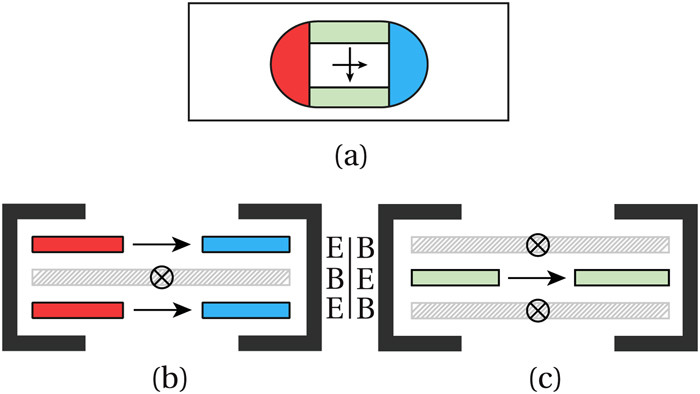Paper Maurice Krielaart higlighted as editor's pick in Journal of Applied Physics
The paper of Maurice Krielaart on "Miniature electron beam separator based on three stacked dipoles" has been highlighted as editor's pick in the Journal of Applied Physics.
Abstract
We designed and built a compact bi-axial electron beam separator. This separator is an indispensable electron optical element in the development of MEMS-mirror-based miniaturized concepts for quantum electron microscopy (QEM) and aberration-corrected low-voltage scanning electron microscopy (AC-SEM). The separator provides the essential cycling of the electron beam between the two parallel optical axes that are part of these systems. This requires crossed electric and magnetic fields perpendicular to the beam path, as can be found in Wien-filter type beam separators. In our miniaturized QEM or AC-SEM concepts, the parallel axes are separated by only 1 mm. Conventional Wien-filter-based beam separator concepts rely on in-plane electric and magnetic multipole electrode configurations that are larger than the restricted available volume in these miniaturized QEM/AC-SEM systems.

Our compact beam separator design introduces three stacked dipole electrode layers, which enables simultaneous beam separation at two parallel axes that are in close proximity. The outer layer electrodes maintain an electric field for which the direction on the one axis is opposed to that on the other axis. The middle layer generates a perpendicularly oriented magnetic field that spans both axes. The total field configuration enables the deflection of the beam on one axis and simultaneously provides a straight passage on the other axis. The deflection strength and distortion fields of the beam separator are experimentally obtained with a 2 keV electron beam energy. The results validate the use of the beam separator for electron energies up to 5 keV and deflection angles up to 100 mrad.
ACKNOWLEDGMENTS
The EBE separator concept was developed by P. Kruit, M. A. R. Krielaart, and D. J. Maas. Image registration and processing were done by S. V. Loginov and M. A. R. Krielaart. The authors acknowledge technical support for the mechanical design by Ruud van Tol and Youp van Goozen, flexible PCB design by Han van der Linden, and electrical supplies design by Paul Keijzer. M. A. R. Krielaart also acknowledges experimental support from J. te West during initial evaluation experiments. We acknowledge financial support for this work by the Dutch Research Council (NWO) and the Gordon and Betty Moore Foundation. D. J. Maas gratefully acknowledges support by Hitachi High Technologies for his contribution to this work.